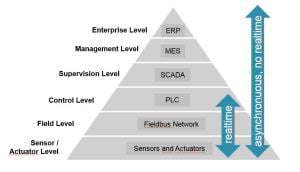With the start of industry 3.0 (the computer based automation of production) the users of machine tools began to avoid routine work like manually entering tool data into the HMI. Computerized Numerical Controlled CNC machine tools gained more and more market share in metalworking applications. These machines are quite often equipped with automatic tool change systems. For a correct production the real tool dimensions need to be entered into the CNC to define the tool path.
Tool ID for Automatic and Reliable Data Handling
Rather than entering the real tool diameter and tool length manually into the CNC, this data may be measured by a tool pre-setter and then stored in the RFID tool chip via an integrated RFID read-/write system. Typically when the tool is entered in the tool magazine the tool data are read by another read-/ write system which is integrated in the machine tool.
 Globally in most cases the RFID tool chips are mounted in the tool holder (radially mounted eg. in SK or HSK holders). In some applications the RFID tool chips are mounted in the pull stud (which holds the tool in the tool holder). Especially in Japan this tag position is used.
Globally in most cases the RFID tool chips are mounted in the tool holder (radially mounted eg. in SK or HSK holders). In some applications the RFID tool chips are mounted in the pull stud (which holds the tool in the tool holder). Especially in Japan this tag position is used.
Tool Data for Different Levels of the Automation Pyramid
 The tool data like tool diameters and tool lengths are relevant for the control level to guarantee a precise production of the work pieces. Other data like planned and real tool usage times are relevant for industrial engineering and quality control to e.g. secure a defined surface finish of the work pieces.
The tool data like tool diameters and tool lengths are relevant for the control level to guarantee a precise production of the work pieces. Other data like planned and real tool usage times are relevant for industrial engineering and quality control to e.g. secure a defined surface finish of the work pieces.
Industrial engineers perform milling and optimization tests (with different rotational spindle speeds and tool feed rates) in order to find the perfect tool usage time as a balance between efficiency and quality.
These engineering activities typically are on the supervision level. The procurement of new tools (when the existing tools are worn out after e.g. 5 to 10 grinding cycles) is conducted via the ERP System as a part of the asset management.
Coming back to the beginning of the 3rd industrial revolution the concept of CIM (Computer Integrated Manufacturing) was created, driven by the integration of computers and information technology (IT).
With the 4th industrial revolution, Industry 4.0, the success story of the Internet now adds cyber physical systems to industrial production. Cloud systems support and speed up the communication between customers and suppliers. Tool Management covers two areas of the Automation pyramid.
- Machine Control: From sensor / actuator level up to the control level (real time )
- Asset Management: Up to enterprise level and beyond (even to the “Cloud”)
To learn more about Tool ID visit www.balluff.com
























